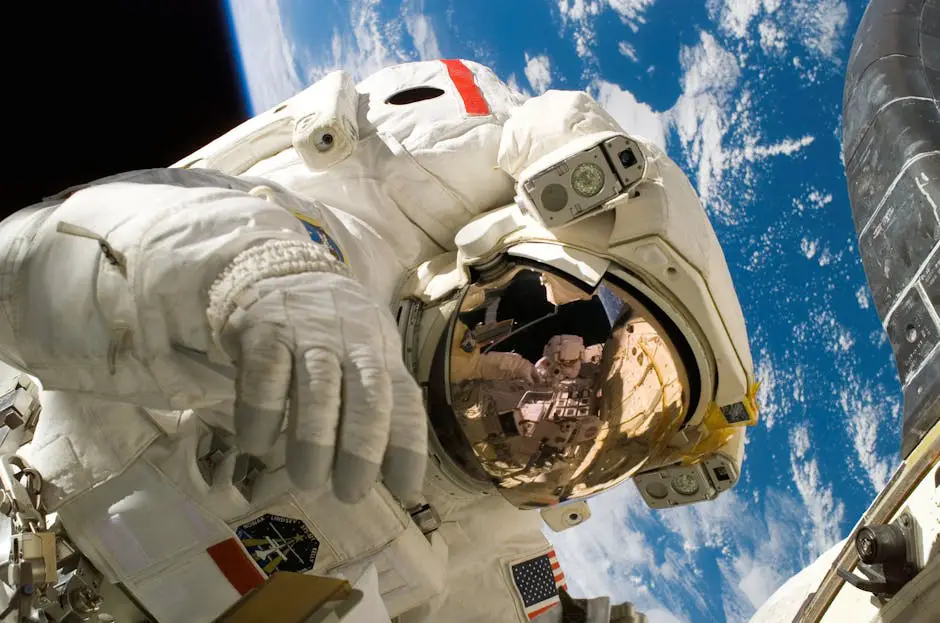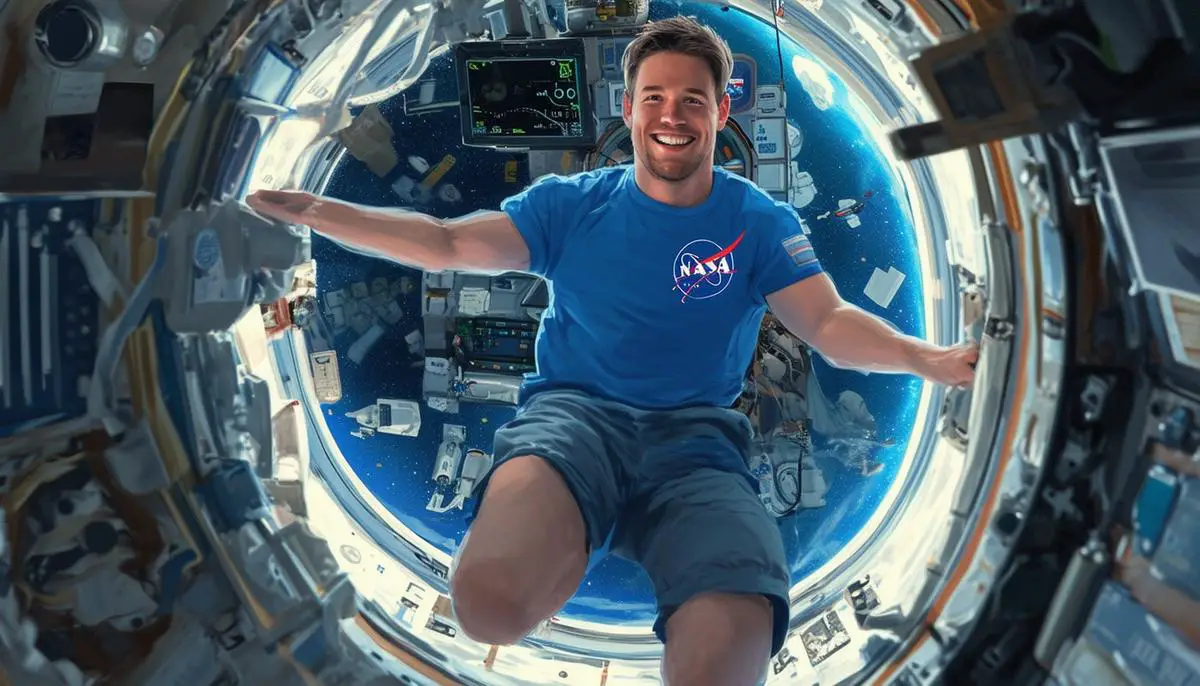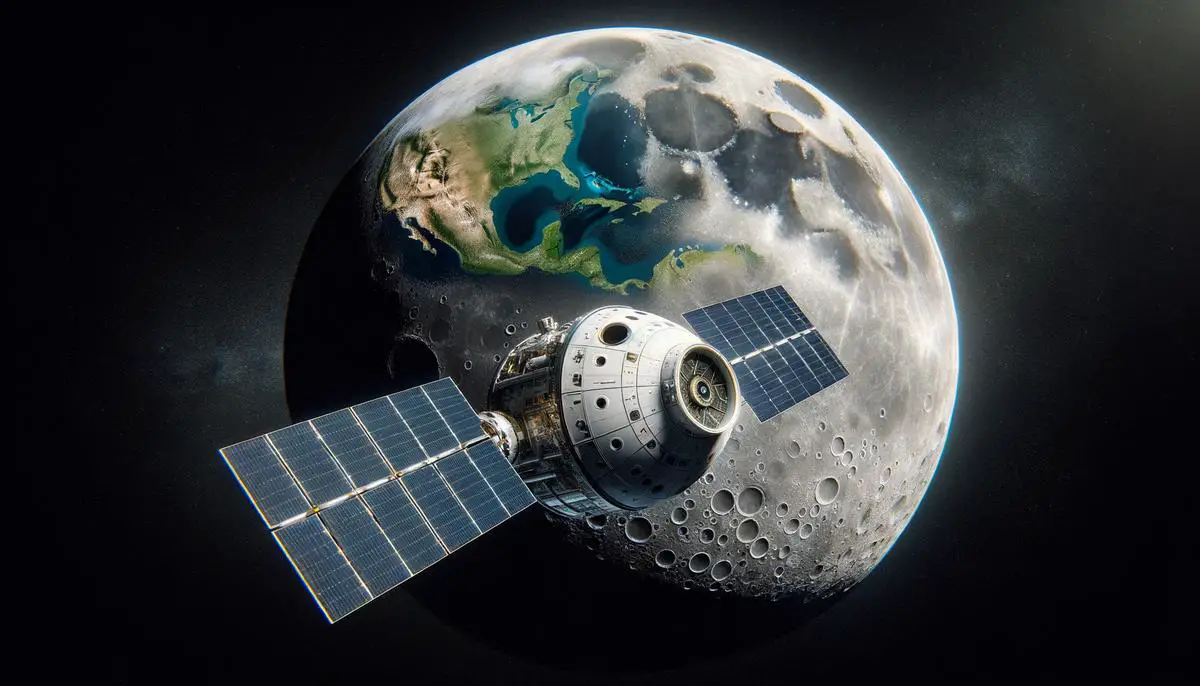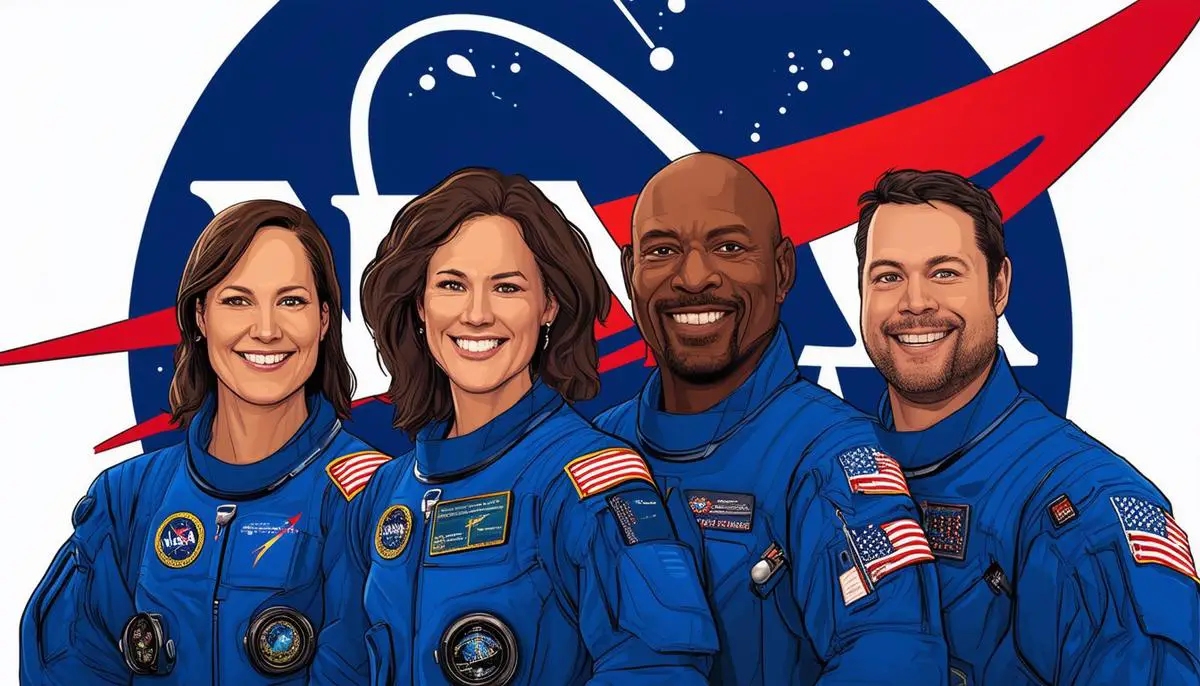Contents
Christina Koch: Record-Breaking Spacefarer
Christina Koch, a formidable force in space exploration, earned both a Bachelor's and a Master's degree in Electrical Engineering from North Carolina State University. She honed her skills as an electrical engineer at NASA's Goddard Space Flight Center and contributed to projects at the Johns Hopkins University Applied Physics Laboratory, including developing instruments for NASA missions like the Juno Jupiter orbiter and the Van Allen Probes. Koch also conducted scientific fieldwork in remote locations like Antarctica, Greenland, and Alaska.
After her selection in NASA's 2013 astronaut class, Koch embarked on a history-making mission to the International Space Station (ISS) in 2019. The mission lasted an impressive 328 days, the longest single spaceflight by any woman. During her time aboard the ISS, she participated in six spacewalks, including the first all-female spacewalk with fellow astronaut Jessica Meir1.
Koch's background and experiences have shaped her into a vital player in NASA's Artemis Program, signifying her continued impact on space exploration.

Victor Glover: Trailblazing Pilot
Victor Glover, from Pomona, California, earned a Bachelor's degree in Engineering from California Polytechnic State University in San Luis Obispo and three Master's degrees in various branches of engineering. He was designated a Naval Aviator in the U.S. Navy, where he logged over 3,000 flight hours in more than 40 different aircraft, including over 400 carrier arrested landings and 24 combat missions.
NASA selected Glover as part of the 2013 astronaut class. In November 2020, he served as the pilot for SpaceX's Crew-1 mission, becoming the first African American to stay on the ISS for an extended period. During his 168 days aboard the ISS, Glover was involved in:
- Scientific investigations
- Technology demonstrations
- Engineering activities, including four spacewalks
Glover's contributions symbolize a step forward in representation and inclusion within the astronaut corps. His role in the Artemis Program underscores NASA's commitment to diversity and exploration as he prepares for more ambitious missions, including potentially walking on the lunar surface.
Jeremy Hansen: Canada's Lunar Representative
Jeremy Hansen, born in London, Ontario, earned a Bachelor's degree in Honours Space Science and a Master's degree in Physics from the Royal Military College of Canada in Kingston. He furthered his career as a fighter pilot in the Royal Canadian Air Force, excelling in various operational roles and reflecting intense training, proficiency in high-performance aircraft, and a commitment to his country's air defense.
The Canadian Space Agency (CSA) selected Hansen in 2009 during its third astronaut recruitment campaign. After completing astronaut training in 2011, Hansen participated in initiatives like the European Space Agency's CAVES program and NASA's NEEMO underwater missions, sharpening his skills for long-duration spaceflight.
Hansen stands out as the first Canadian to venture beyond Earth orbit. His involvement in Artemis 2 underscores the strong collaborative spirit fostered by NASA and CSA, especially through Canada's significant contributions like the development of the Canadarm3 for the Lunar Gateway. Hansen's seat on Artemis 2, symbolic of this partnership, marks a milestone for Canadian space exploration.
Reid Wiseman: Experienced Commander
Reid Wiseman, from Baltimore, Maryland, earned a Bachelor's degree in Engineering from Rensselaer Polytechnic Institute and a Master's degree in Systems Engineering from Johns Hopkins University. He carved out a distinguished career in the U.S. Navy as a pilot, deploying twice to the Middle East, where his skills and composure were tested under operational conditions in fighter jet combat.
NASA selected Wiseman as one of nine members of the 2009 astronaut class. In May 2014, he launched on his first spaceflight as a flight engineer on Expedition 40/41 to the ISS. During this 165-day mission, Wiseman conducted two spacewalks totaling almost 13 hours, tackling complex experiments and handling the demanding conditions of space2.
From December 2020 to November 2022, Wiseman served as Chief of the Astronaut Office at NASA, overseeing the selection and training of astronauts, as well as guiding mission planning and crew assignments. His role as Commander of the Artemis II mission highlights NASA's confidence in his capability to lead a crew through uncharted territories, setting a critical foundation for future deep-space exploration.

Artemis II Mission Overview
The Artemis II mission, an approximately 10-day mission, will be the first crewed flight using NASA's Space Launch System (SLS) rocket and the Orion spacecraft. It aims to pave the way for more extended lunar surface missions and future human expeditions to Mars.
The SLS rocket, designed for deep-space missions, will deliver the thrust capabilities necessary for transporting large payloads and crew aboard the Orion spacecraft beyond low Earth orbit. Orion, designed for prolonged space missions, offers advanced life-support and safety features that cater to deep-space conditions.
Artemis II's mission profile involves a series of rigorous tests and demonstrations:
- After lifting off from Kennedy Space Center in Florida, the crew will spend the initial days operating relatively close to Earth, performing system checks and navigation demonstrations.
- Once cleared, Orion will embark on a four-day outbound trajectory to loop around the Moon, reaching approximately 230,000 miles from Earth.
- The mission will test Orion's performance in deep-space environments, evaluating life-support systems, communication capabilities, and navigation tools.
- The spacecraft's power, thermal, and structural systems will be scrutinized to validate their readiness for longer and more demanding missions.
- The return trip will harness lunar and Earth gravitational forces in a fuel-efficient trajectory known as a free return, ensuring the spacecraft is naturally pulled back to Earth's atmosphere for reentry before splashing down in the Pacific Ocean near San Diego.
Artemis II represents a precursor to Artemis III, which will aim to land astronauts on the lunar surface, including the first woman and first person of color. These missions are stepping stones in NASA's broader Moon-to-Mars objectives, shaping strategies for longer-term lunar habitation and Martian explorations.

The Artemis II mission stands as a crucial step forward in advancing our technological capabilities and setting the stage for future lunar landings and beyond. The dedication and expertise of astronauts like Christina Koch, Victor Glover, Jeremy Hansen, and Reid Wiseman exemplify the spirit of human perseverance and collaboration, paving the way for a new era of space exploration and bringing us closer to understanding and thriving in the vast expanse beyond our planet.
- NASA. NASA astronauts complete first all-woman spacewalk. Published October 18, 2019.
- NASA. Reid Wiseman: commander on Artemis II. Accessed April 3, 2023.
